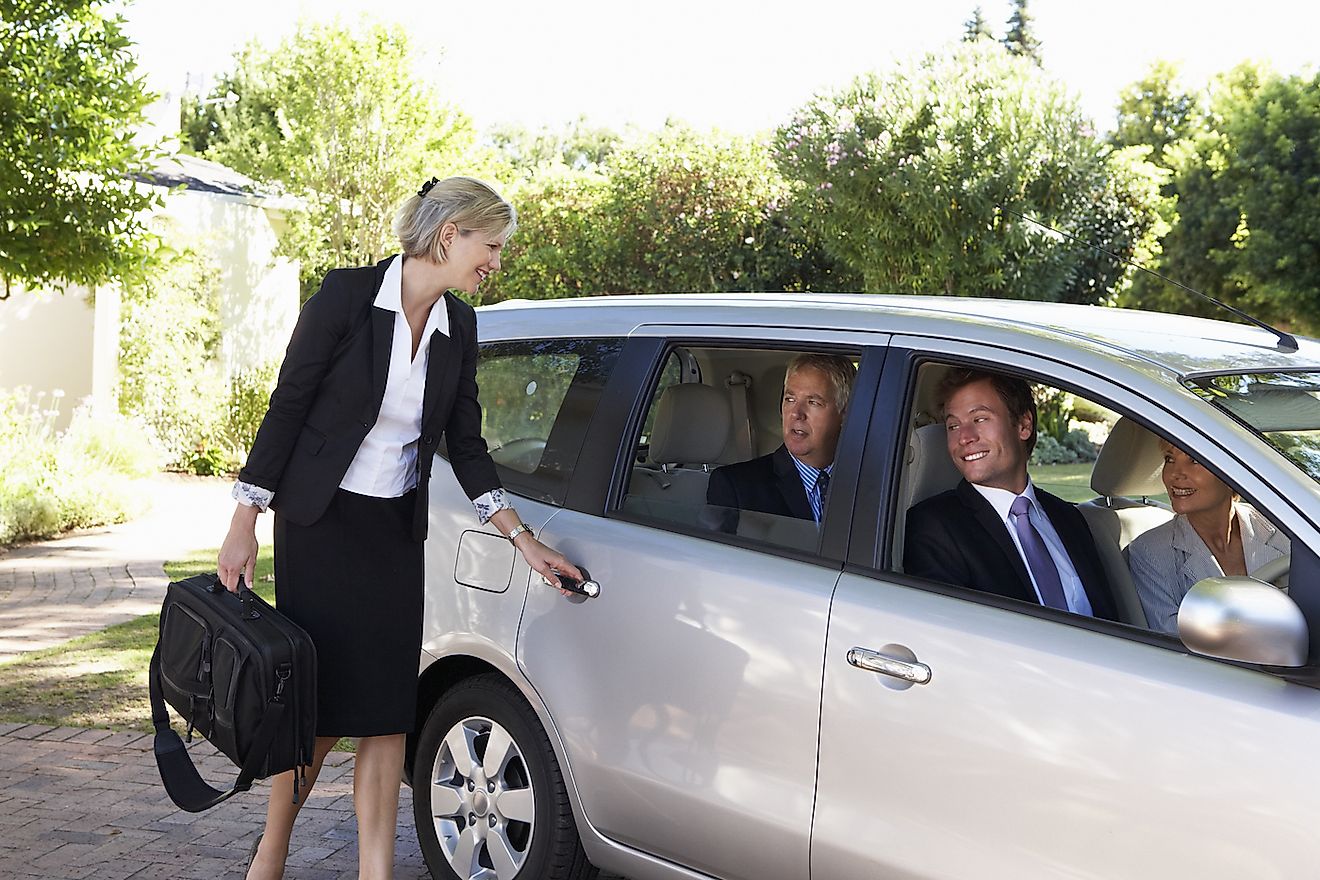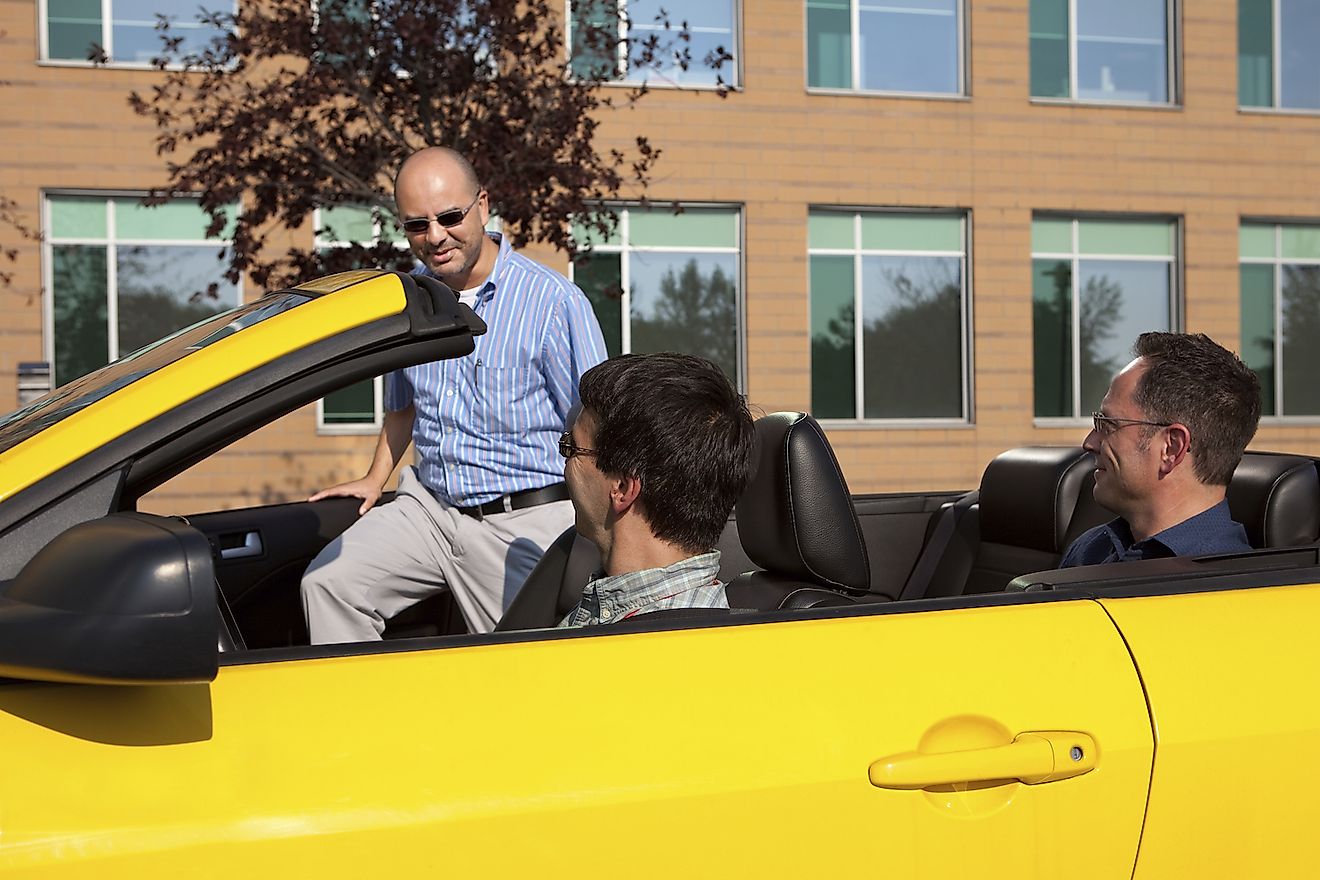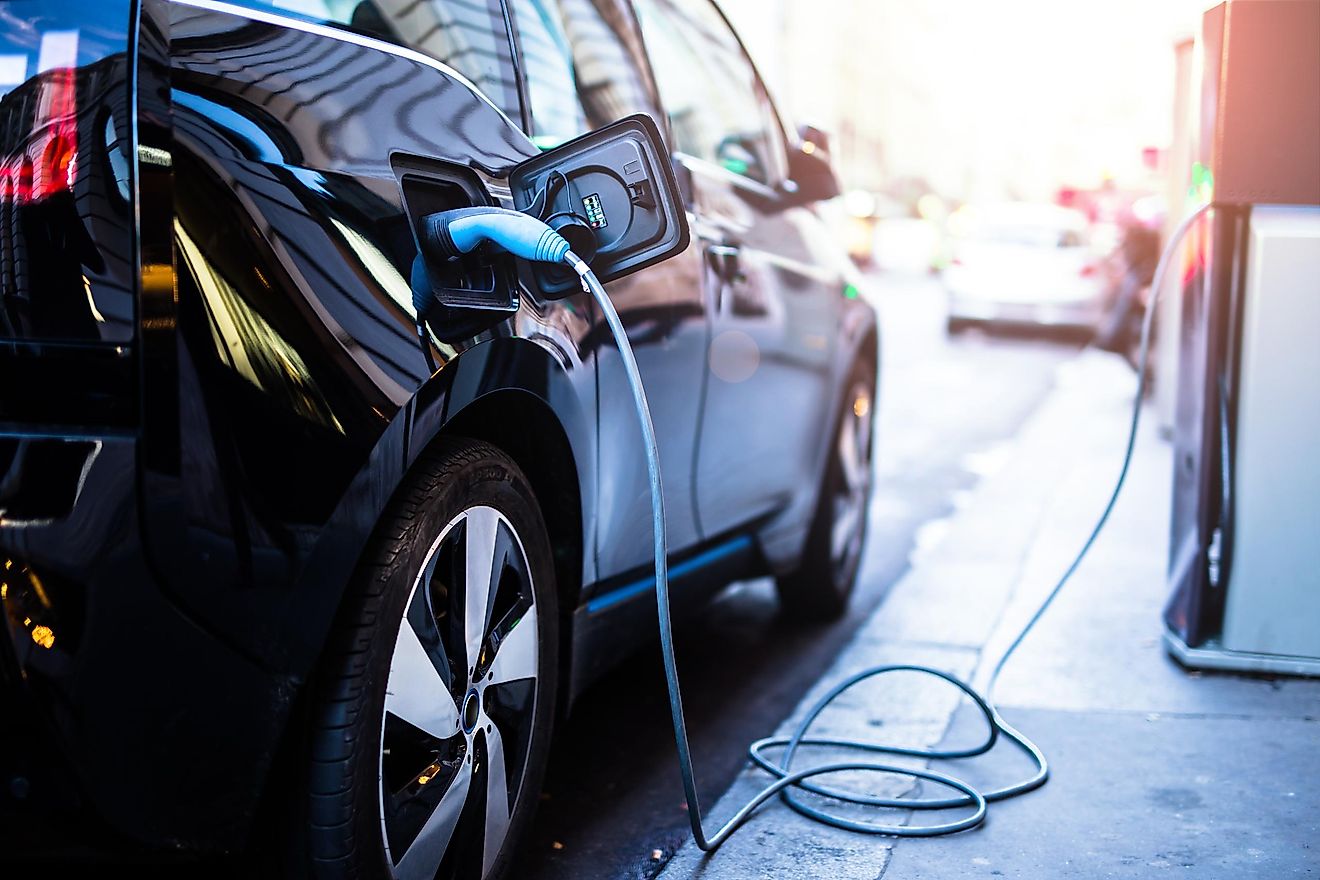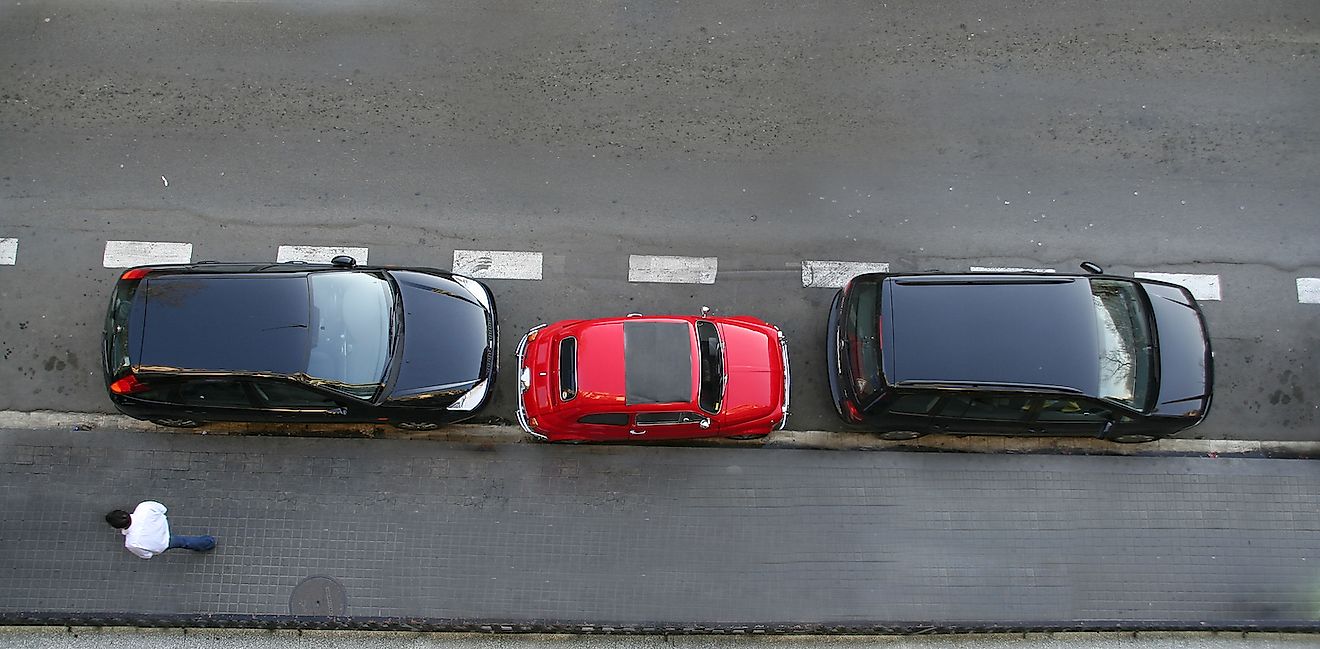Ways We Can Change Our Commuting Habits To Protect The Environment

- Far more Americans walk to work than ride a bike, with Boston being home to the most workers who walk to their jobs.
- In 2017, it was found that 5.2% of Americans worked from home, and than number is likely to go up following the coronavirus pandemic.
- About 12% of all CO2 emissions come from airplanes, and Americans took 464.4 million business trips in 2019.
Vehicles have an enormous impact on the environment. According to the Union of Concerned Scientists (USCUSA.org), cars and trucks are responsible for almost one-fifth of all carbon emissions in the US. Cars, trucks, planes, trains, freight, and ships combined accounted for 30% of all US global warming emissions in 2014.
It is a fact that over 19 pounds of global warming emissions come from your car’s tailpipe for every gallon of gas it burns, and it is also true that in 2018, the average amount of time each working American spent commuting to their job rose to just over 27 minutes. Evidently, the way we travel could, in a large way, impact how healthy our planet is now and in the future.
Taking simple steps to alter your habits can actually make a big change. If everyone participates in a small amount of environmental action, it can all add up to a drastic drop in harmful carbon emissions. Some ways you can help clean our air are by investing in a vehicle that burns less fuel, using alternatives to gasoline, and even avoiding vehicles that burn fossil fuels altogether.
Here are ten ways you can change your commuting habits to help clean up the environment.
10. Bike

The most recent American census shows that about 872,000 people (0.6%) of all working people in the US ride their bike to work. Who likes two wheels? Young people aged 16 to 24 living in urban areas were most likely to ride a bike to work but just marginally so, at 1%. Workers 45 years and older living in cities were also shown to bike to work at higher rates than the national average. More men than women ride bikes to work, and the top five cities in the US where people do so include Davis CA, Boulder CO, Santa Cruz CA, Palo Alto CA, and Berkeley CA. By joining the crowd you too can contribute to better the environment by biking to work.
9. Walk

If you live close enough to walk to your workplace, count yourself as very lucky. Somewhat surprisingly, walking to work is much more popular than riding a bicycle, in the US. Census data shows that around 2.9% of Americans walk to work. In Boston, 15% of workers use their feet to get to work, followed by Washington DC (12%), Pittsburgh (11%), New York City (10%), and San Francisco (almost 10%).
Walking to work is great for your health. According to the American Heart Association, walking just half an hour each day reduces your risk of many serious health problems including stroke, osteoporosis, and heart disease. By walking to work both you and the environment can benefit.
8. Take public transit

Not everyone lives within biking or walking distance from their workplace. Taking public transit, if it is available to you, can also be a superb way to reduce your harmful emissions.
According to Bloomberg.com, a full bus holding about 70 passengers emits just 0.14 pounds of carbon per passenger mil, compared with 0.89 pounds emitted by an average car holding just one person. One bus at capacity is said to be equal to about 50 cars.
7. Carpool

Sharing your ride to work emoves excess cars from the road, and allows you to cut your carbon footprint. Rideshare programs such as Uber and Lyft, as well on online carpooling sites take cars off the road by coordinating those traveling to the same areas at the same time. For a fee, you can find a way to work that may be somewhat more roundabout than your usual route, but can work just as well. Arranging to carpool with people at your workplace can also help you reduce yoru emissions.
6. Telecommute

If you do not have to go anywhere but your own couch or basement to get to work, you have definitely scored on the climate change prevention front. In 2017, it was found that 5.2% of Americans now work from home, totaling about eight million people. Following the conclusion of the coronavirus pandemic, this percentage may rise permanently as companies find they can save money by having fewer workers come to the office at once.
5. Get an electric car

When it comes to vehicles, electric cars are one of your greenest options. These vehicles emit no greenhouse gas emissions. It is true that electric cars are not entirely free from environmental impact, however. These cars often rely on a lithium-ion battery as their major source of power, and mining lithium does require large amounts of water. At the world’s largest lithium extraction site at the Atacama Salt Flat in Chile, ecosystems have been affected by this large use of water, and aquifers depleted. Scientists have discover ways of recovering lithium from water, but the process still uses a lot.
This being said, over all, electric cars seem to be better for the environment than those run on traditional fossil fuels. Over their lifespan, cars fuels by gasoline have been shown to emit 333g of CO₂ per km (0.6 miles) and electric cars just 273g of CO₂ per km (0.6 miles), making electric cars 18% better when it comes to their carbon footprint.
4. Park further away from your destination and walk or bike the rest

This might seem like a weird idea at first, but it can be fun to do, and good for you. If you have a long drive to work and you are searching for ways to get your daily exercise in while cutting down on your gas consumption, one solution is to park further away from your destination, and walk, run or bike the rest of the way there. You can do this on either end of your commute. Depending on the parking options available to you however, most people would likely prefer to have their vehicle available to them in their driveway at home and would choose to park further away from their workplace. It is cheaper than a gym membership!
3. Get a smaller, more efficient vehicle

The size of your car impacts the size of your carbon footprint. According to the US Environmental Protection Agency (EPA), today’s cars and trucks are 98 to 99% cleaner than similar vehicles built in the 1960s. Consumer Reports ranks cars from the 2020 Honda Insight, the 2020 Toyota Prius, and the 2020 Hyundai Ioniq as the top three most fuel efficient cars now on the market.
2. Fly less

Most of us do not fly to work, but many people do take multiple plane trips every year to conduct business far away. Nothing really compares to true, in-person conversation, but if it suits your needs, you may consider meeting online instead of taking the long plane trip. In 2019, according to US Travel.org, Americans took 464.4 million business trips and not all traveled on planes, but business travelers do account for about 12% of all airline passengers. Twelve is a popular number. Experts say that aviation is responsible for 12% of all CO2 emissions from sources of transportation.
1. Offset your emissions
If all else fails and you are unable to incorporate any of the changes on this list into your life, you may consider offsetting your carbon emissions, if you can afford it. This means giving money to projects that help the environment. Official carbon offsets are often measured in tonnes of CO2-equivalents. You can buy and sell these through international brokers, as well as online retailers and trading platforms. To ensure your purchase is really making an environmental difference, you can purchase offsets that meet recognized standards, such as those from energy-efficiency and renewable-energy projects that qualify for the Gold Standard.
There are many ways to change your commuting habits that could eventually take our planet in a whole new direction when it comes to the environment, and together we can make a change.











